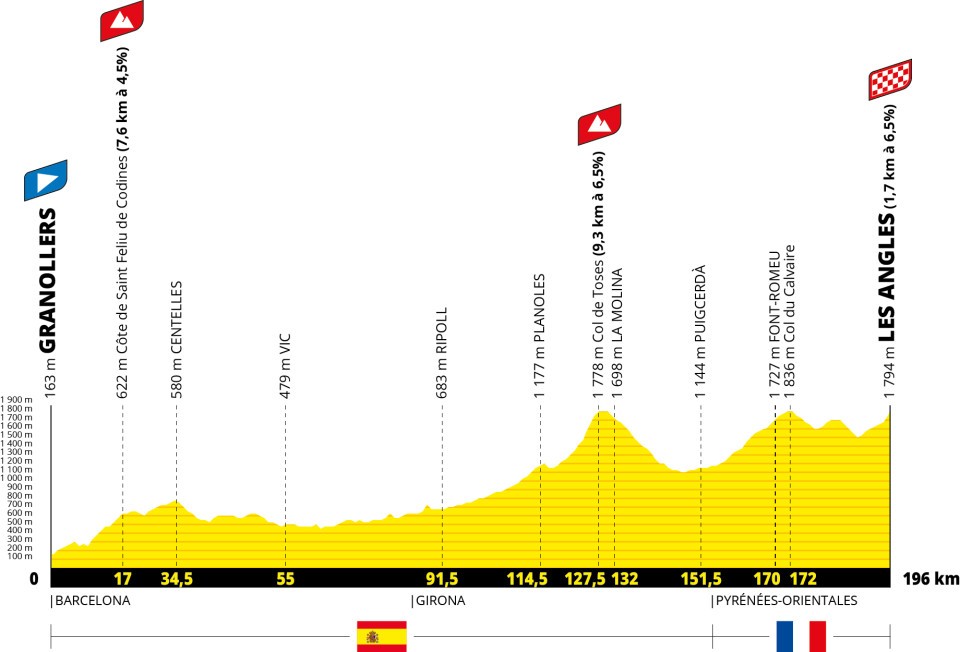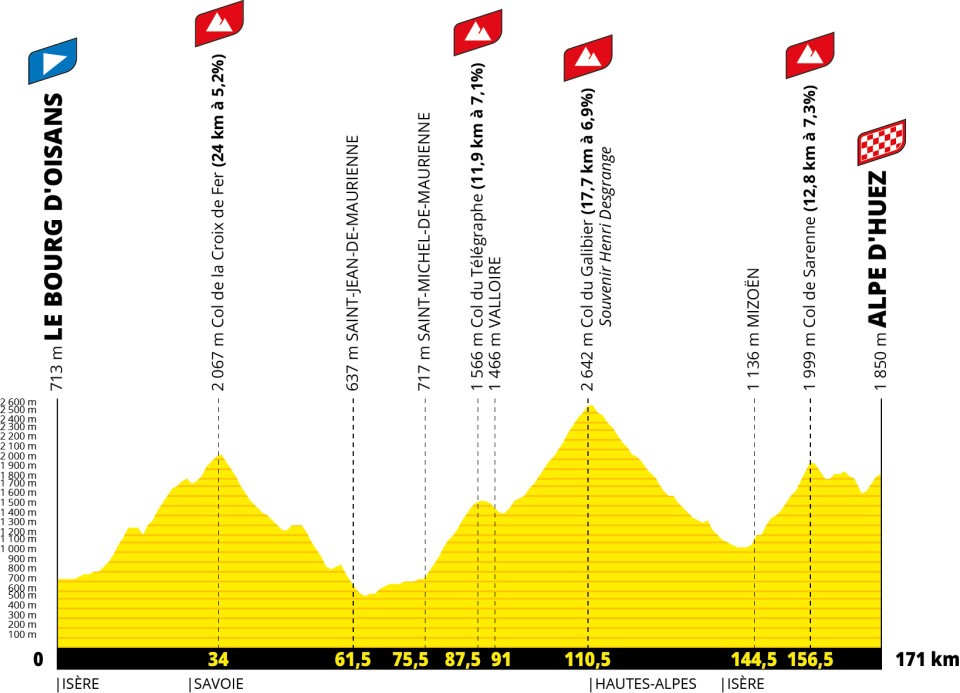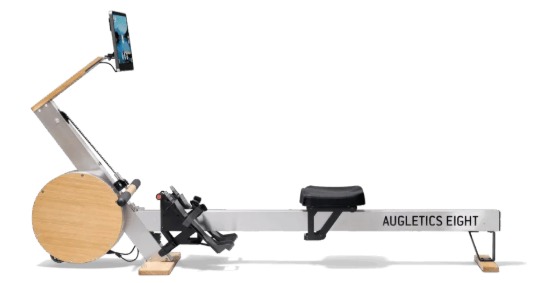It’s out, the guessing is over, we know the route. The adventure has a face, and it commands a great deal of respect. Here is a brief introduction to what is in store for us in June 2026.
Last Thursday was the widely awaited day for the route presentation, and it’s quite something. In short, higher, but not further. This means that the routes are no longer as long, with only one 203 km stage and otherwise sections of around 180 km, but they are significantly higher. While we covered 45,000 metres of elevation gain in 2017, next year we will climb the equivalent of Mount Everest once again, an incredible 54,000 metres of elevation gain. 54 km uphill, every gram counts, and so the Tour de France is increasingly becoming a competition for the slender 55 kg riders. If this is still cycling is a subject to debate, however, we have to cope that facts.
Although the altitude immediately stands out, it is easy to overlook the fact that the 2026 route passes through many smaller, more rural towns; it passes through towns and villages where the Tour is almost a religion – where the locals are passionate about cycling, know the history of the Tour and, above all, support the Tour. So we can expect many fabulously decorated villages with lots of humour and ingenuity. This tour is not about the long, flat, agricultural France, but about people. It is a chance to truly experience the beauty of France, even in areas that you would not normally visit on the usual tourist trails. (Quote from the organisers).
From Barcelona over the Pyrenees to Bordeaux, through the Central Massif to the Vosges and down to the Alps. That means the last week will demand everything from everyone. Anyone who has left too much energy on the road in the first two weeks will have considerable problems in the last five days, if not end up in the broom wagon. We’re already dreading it, said a friend.
These will be three very different weeks. Whereas in the past, almost half of the entire route was covered in the first week, allowing riders to get used to the rhythm and the daily exertion, this time the schedule is extremely varied and different, and it starts off tough right away on day 3.
First Week
Right after the first flat stage, the route climbs steeply into the Spanish and French Pyrenees. The third stage, covering 195 km, includes two climbs to 1,750 m. Here, it’s straight down to business, so there’s no time to warm up, etc.

Then it’s a little easier from beautiful Carcassonne via Foix to Pau (as every year) and another mountain finish in the Pyrenees. To me, it will be my third time on the Col d’Aspin and Col d’Tourmalet (why again?), but this time from the other side. But the Pyrenees are always an experience. The Pyrenees are simply beautiful.

Afterwards it’s flat and fast to Bordeaux, via Bergerac to the Massif Central, towards the first, well-deserved rest day. Which my dear friend Beat would call a “flat day”.
Secound Week
Right after a rest day, the route takes us over the relatively flat and undulating sections into the Vosges and then to the first mountain finish in the Alps with the second day resting. On the map, it looks rather “easier”, if you like. The aim this week is not to lose too much energy and not to go into the third week too exhausted.
We already cycled the route from Périgueux to Bergerac in 2017, and I remember a wonderful day trip through beautiful countryside with sunflower fields and small villages.
Vichy, Nevers, the route from Magny-Cours and Chalon-sur-Saone are all very beautiful little towns, and cycling between them will be some of the most beautiful, relaxed and talkative of the entire tour. This is followed by the Vosges, which never disappoint. Stages 13 and 14 deserve at least a place on the list of the top 5 stages of 2026!

The (horrible) Last Week
We are going through hell. These five penultimate stages will be – in my view as of today – the hardest days of the race. I already have enormous respect for these days.
However, in my memory of 2017, the third week was when I started to “fly”, when everything suddenly became easy and carefree. I hope 2026 will be the same.
Looking at the 20th stage, Chris’s first words were: “They want to kill us here”. After 19 stages across France, another Ötztal Marathon at the end. That’s a 5600 metres of elevation gain in one day. My daily record so far has been 4580 metres. I should probably set off at dawn so that I can at least make it back to the hotel for dinner. Or I could stay overnight in Alpe d’Huez, as we will already be there the day before, on stage 19.

Bottom Line
I feel that this is not a Tour de France we know from previous years. This is a tour that sets different standards and challenges. A tour that we have to cope, … no pushing is allowed. It is also a tour that we could fail. Which reminds me of:
“Success is not final, failure is not fatal: it is the courage to continue that counts.”
Winston Churchill
.
But still, please watch the video of the route, the 5-minute flyover of these 3 weeks in time-lapse is motivation enough. Actually, I could set off right now.
.
Just 34 weeks for prepatation …

PS: My new training device to achieve the VO2 max of a 30-year-old, as I did in the years at Credit Suisse each morning at 6am.

PPS: We cannot avoid or stop aging, but we can age healthily if we are not threatened by insidious diseases from which no one is protected. But aging healthily also means working on your health, daily, the older we get. If some reader gets motivated on my writing, all the effort is worth doing it.
